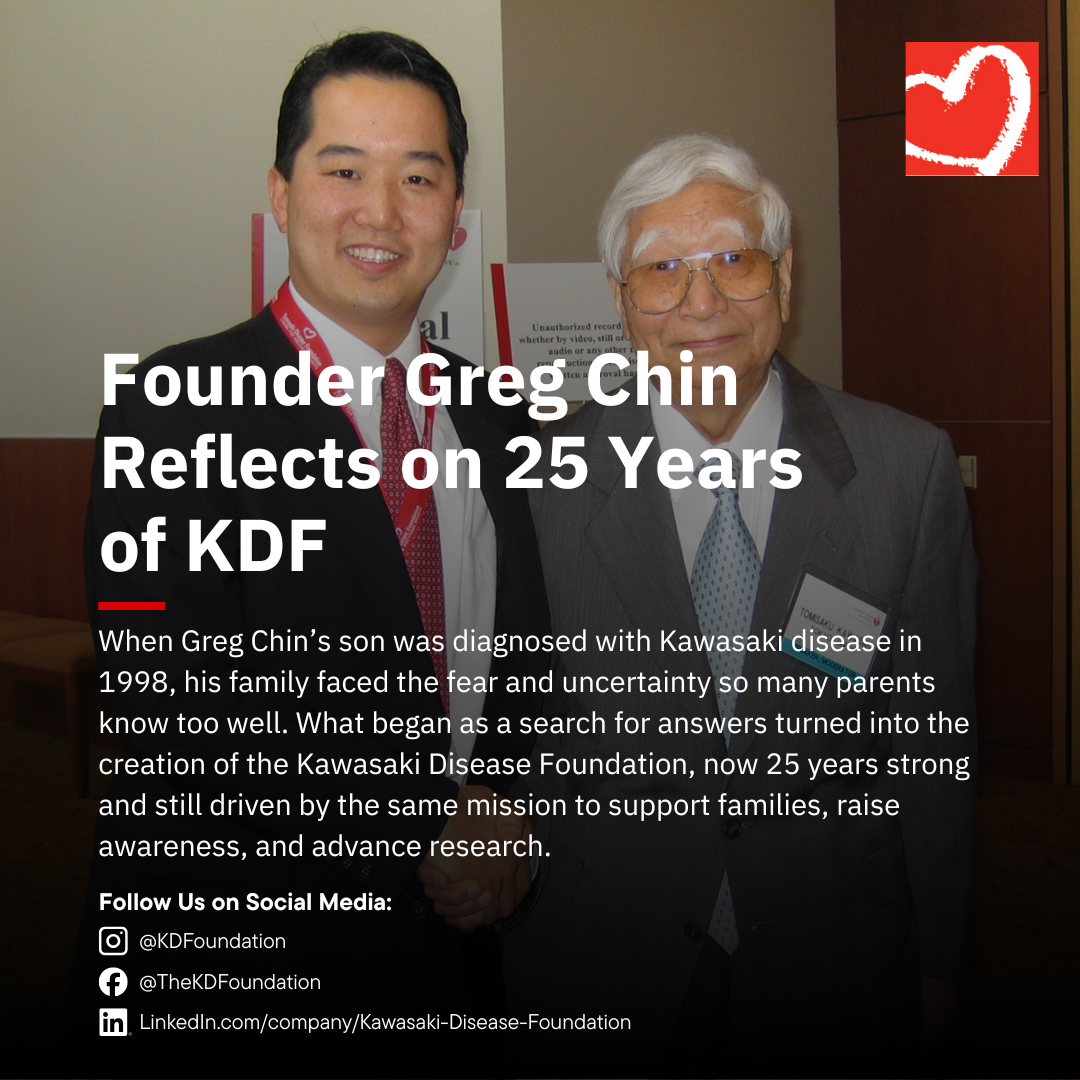
As we celebrate 25 years of the Kawasaki Disease Foundation, we’re honored to look back on where it all began with one family’s determination to make sure no parent ever faced Kawasaki disease alone. Greg Chin, who founded KDF in 2000 after his son’s diagnosis, transformed his family’s experience into a mission that would unite families, researchers, and doctors across the globe. What started as a small parent symposium grew into a powerful, lasting movement dedicated to awareness, education, and research. In this special Q&A, Greg reflects on the journey that inspired the creation of KDF, the milestones that shaped its legacy, and the people who continue to carry its mission forward today.
- As the founder of the Kawasaki Disease Foundation, can you share what first brought you into this community and inspired you to establish the organization 25 years ago?
Our son had KD in 1998, just a few months before his 3rd birthday. We had never heard of KD.
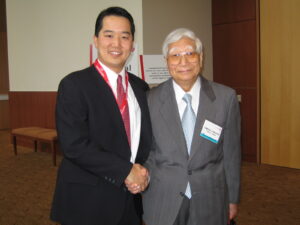
In hindsight, our experience is very much like the stories we hear today about the difficult and stressful time during those days leading up to official diagnosis and treatment, as well as the recovery in the days, months, and years following diagnosis.
At the time, the internet was pretty nascent, and there wasn’t a KD support group or non-profit organization focused on KD. Fortunately, our son was treated by internationally renowned KD experts at the Children’s Hospital in Boston. It was through these KD experts that we were connected to the network of
KD researchers and clinicians who had dedicated their careers to KD. We worked with the team in Boston and Dr. Jane Burns to present a KD parent symposium. The purpose was to bridge the medical experts with families and to promote support among families. It was a simple concept that became the blueprint for KDF.
- Looking back, what were your original hopes for the foundation, and how do you feel seeing how far it has come in serving families and advancing KD awareness today?
We didn’t set out to start a non-profit when we planned the Boston event. But it became apparent that an organized group could help fill a void. We had 3 simple goals: 1) support children and families, 2) promote education and awareness to aid early detection and treatment, and 3) support KD research.
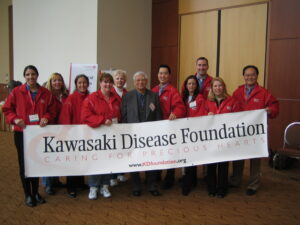 Our hope was to make a difference. While we have long pined for research to identify the cause of KD, we believed that education and awareness could help save lives. It was a simple concept and one that non-medical people like parents and volunteers could get behind. It just required time, organization, energy, dedication, perseverance, empathy, and compassion. No special skills or degree required.
Our hope was to make a difference. While we have long pined for research to identify the cause of KD, we believed that education and awareness could help save lives. It was a simple concept and one that non-medical people like parents and volunteers could get behind. It just required time, organization, energy, dedication, perseverance, empathy, and compassion. No special skills or degree required.
I’m blown away that KDF has been around so long. Perhaps I was naive and hopeful that a cause would be found within 5-10 years, and the need for KDF would dissipate. But as long as the cause remains elusive and a reliable and accessible diagnostic test does not exist, I think there may be a need for an organization like KDF. And perhaps, for the countless number of children who have been afflicted with heart damage, even if a cause is found, KDF can sharpen its focus on this population. I feel grateful that many other dedicated volunteers felt that we had started something worth perpetuating. A special acknowledgment to a handful of people who were there from the beginning: Catherine Frank, Kate Davila and Karin Wicker, as well as Vanessa Gutierrez.
- Over the past 25 years, what moments or milestones stand out to you as some of the proudest accomplishments for the foundation and the KD community?
Our very first KD parent event in Boston. I don’t recall the exact date, but it was in 2000 before KDF was officially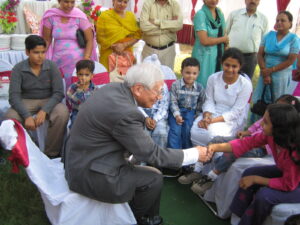 formed…The very first participation in the International Kawasaki Disease Symposium in Hakone, Japan, in December 2001…Launch of the first iteration of the KDF website…Creation of the KDF Bridges support program…Participation in a KD symposium in India with Dr. Surjit Singh and Dr. Kawasaki. Met some really nice families…Creation of the KDF photo library of visible symptoms…Assisting in the creation of similar KD parent organizations in Canada, Australia, and South Africa.
formed…The very first participation in the International Kawasaki Disease Symposium in Hakone, Japan, in December 2001…Launch of the first iteration of the KDF website…Creation of the KDF Bridges support program…Participation in a KD symposium in India with Dr. Surjit Singh and Dr. Kawasaki. Met some really nice families…Creation of the KDF photo library of visible symptoms…Assisting in the creation of similar KD parent organizations in Canada, Australia, and South Africa.
I’m incredibly proud of the strong relationship we have developed with the original KD parent group in Japan. Development of a sustainable board of directors, which enabled me to pass the torch to a new group of volunteer leaders. Creation of the KDF youth initiative. I was not involved in the launch, but I think it is incredibly important and impactful.
- What has motivated you to continue your service and leadership within the KD Foundation across these decades, and how has your perspective evolved since those early days?
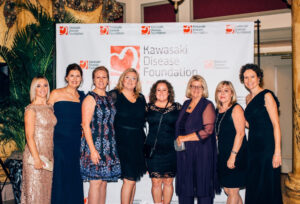 I’m motivated by the impact we can have on the lives of children and their families. I’m really struck by the similarity of family experiences today, as our family’s case was over 25 years ago. I’m motivated by the incredible doctors who have been at this much longer than I have, and still have the energy and passion to support the cause.
I’m motivated by the impact we can have on the lives of children and their families. I’m really struck by the similarity of family experiences today, as our family’s case was over 25 years ago. I’m motivated by the incredible doctors who have been at this much longer than I have, and still have the energy and passion to support the cause.
I’m motivated by the other parents and volunteers who see the importance of maintaining the original mission. I’m motivated because we still don’t know what causes KD. Since I have taken a step back in a day-to-day role, I can look a bit objectively about the operations of the organization and I’m impressed by how the current team has taken the organization to the next level. I never thought that I would still be involved, and I could not foresee when we started this that it would still be going strong.
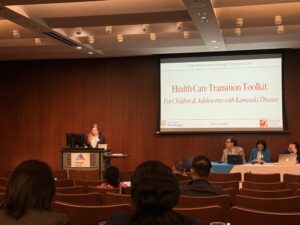
5. As we celebrate this 25-year milestone, what message would you like to share with the families, volunteers, doctors, and supporters who have been part of this journey?
Extreme gratitude to all of the volunteers and doctors who have dedicated so much time, energy, and resources to the cause. Extreme gratitude to the countless number of donors and families who have sustained the organization all these years. I’m reminded of our original message: Even in the absence of a medical breakthrough, precious lives can be saved through education and awareness. This rings true to this day. Lastly, to parents: you are your child’s best advocate. One of our goals has been to empower families with accurate information and resources to fight for their children.
